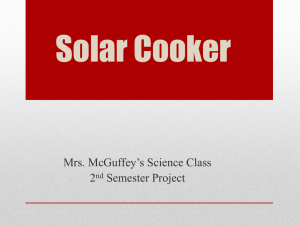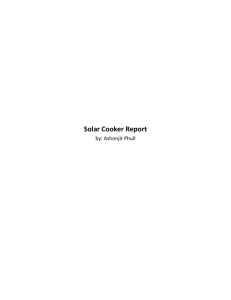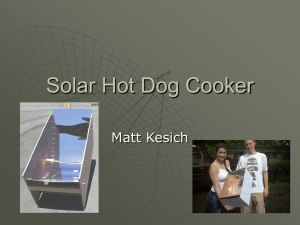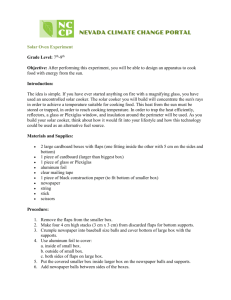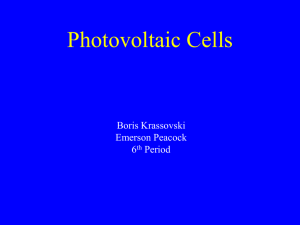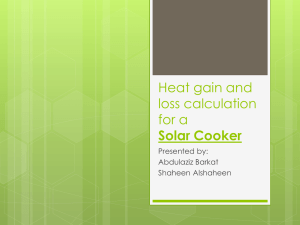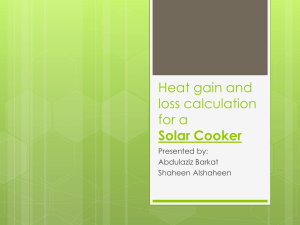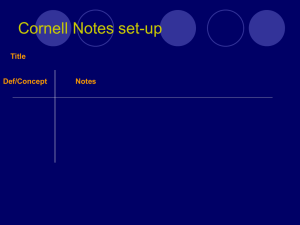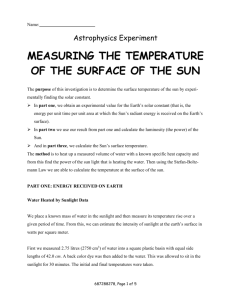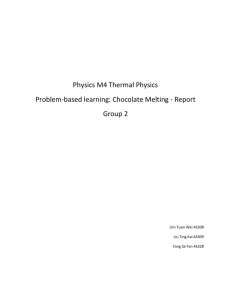AIC Solar Cooker Report 12July 2013
advertisement
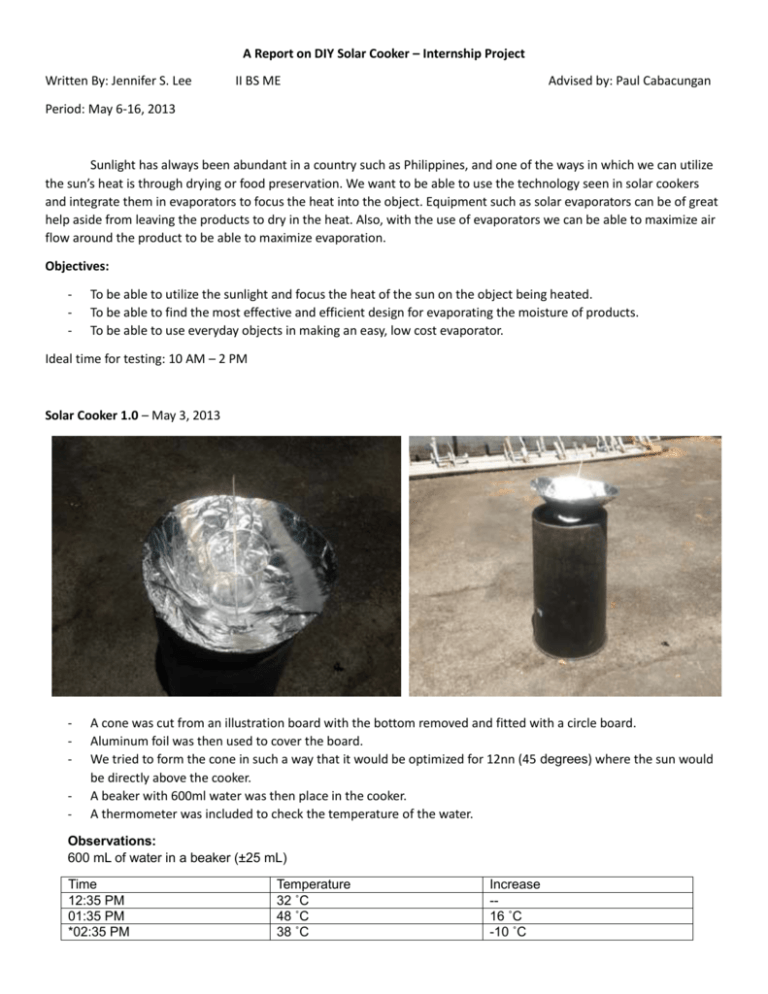
A Report on DIY Solar Cooker – Internship Project Written By: Jennifer S. Lee II BS ME Advised by: Paul Cabacungan Period: May 6-16, 2013 Sunlight has always been abundant in a country such as Philippines, and one of the ways in which we can utilize the sun’s heat is through drying or food preservation. We want to be able to use the technology seen in solar cookers and integrate them in evaporators to focus the heat into the object. Equipment such as solar evaporators can be of great help aside from leaving the products to dry in the heat. Also, with the use of evaporators we can be able to maximize air flow around the product to be able to maximize evaporation. Objectives: - To be able to utilize the sunlight and focus the heat of the sun on the object being heated. To be able to find the most effective and efficient design for evaporating the moisture of products. To be able to use everyday objects in making an easy, low cost evaporator. Ideal time for testing: 10 AM – 2 PM Solar Cooker 1.0 – May 3, 2013 - A cone was cut from an illustration board with the bottom removed and fitted with a circle board. Aluminum foil was then used to cover the board. We tried to form the cone in such a way that it would be optimized for 12nn (45 degrees) where the sun would be directly above the cooker. A beaker with 600ml water was then place in the cooker. A thermometer was included to check the temperature of the water. Observations: 600 mL of water in a beaker (±25 mL) Time 12:35 PM 01:35 PM *02:35 PM Temperature 32 ˚C 48 ˚C 38 ˚C Increase -16 ˚C -10 ˚C *No sunlight was directed at the cooker. (Approx. 30minutes ±10) Highest Temperature Measured: 48 ˚C Average rate of increase: + 2 ˚C per 10 minutes Problems encountered: - After 2 PM the sunlight in the balcony was covered by the building. Sunlight being reflected by the foil wasn’t always directed towards the beaker. Solar cooker was too small to capture much sunlight. Improvements: - Have more people watch the cooker, to move it if necessary. Make the angle/direction of the dish moveable to reflect maximum sunlight at different time frame. Make a bigger solar cooker. Solar Cooker 2.0 - 4 whole illustration board were arranged around a solar cooker setup. The beaker was later changed into a black cup. Observations: 400 mL of water in a beaker (±25 mL) Highest Temperature Measured: 68 ˚C Problems encountered: - Because the boards were just arranged around the setup, the boards are having a hard time withstanding the winds that are blowing throughout the day. The boards that fall over spilled the water in the setup. The boards were not very stable and the light reflected were hard to focus because the boards were hard to control. Because the boards are not hard enough the boards tend to bend as time passes. Improvements: - Find a way to further focus the reflected lights into the water. Make the boards harder and adjustable to accommodate different time frame. - Attach the board to each other so the chances that they would fall over would lessen, and the reflected light would be more consistent throughout the day. Increase the area where the focused light would be absorbed. Solar Cooker 3.0 – May 16, 2013 Observations: 400 mL of water in a beaker (±25 mL) Highest Temperature Measured: 60 ˚C During this experiment we also tried placing an egg in the water. After 1 hour the egg was only partially cooked because we only placed the egg in the beaker after 1 pm and the sun wasn’t that hot compared to 11am12nn. Improvements: - Boards were covered with foil to be able to reflect more light. Area to absorb light was increased. Plastic wrap will be used on the box to copy the duplicate the greenhouse effect. Boards will be tied together for more stability and consistency. Metal strip will be taped behind the board so the boards will be sturdier. Problems encountered: - It was almost untestable because of the bad weather, it was always raining from time to time, and the sunlight was always covered so the temperature could increase that high. The boards were too long so it was hard to direct the light on to the beaker. The walls of the box were too high and at the proper angle started providing shade for the beaker. Conclusion: Because of the current weather conditions, further experiments can’t be made. From the experiments we can see that despite Philippines’ abundant amount of sunlight the sunlight is very much diffused. A much more direct sunlight would be better for the cooker to work effectively, also because of global warming we can see how the weather changes from time to time, that despite it still being May, rain has already been falling on a regular basis. Some of the improvements for the next version will include ventilations for all around airflow. We want to change the purpose of the cooker to an evaporator, to be able to use it different products such as coconut fiber that needs to be dried. Project by: Jennifer Lee, Hadrian Paulo Lim, Harold Balingot
